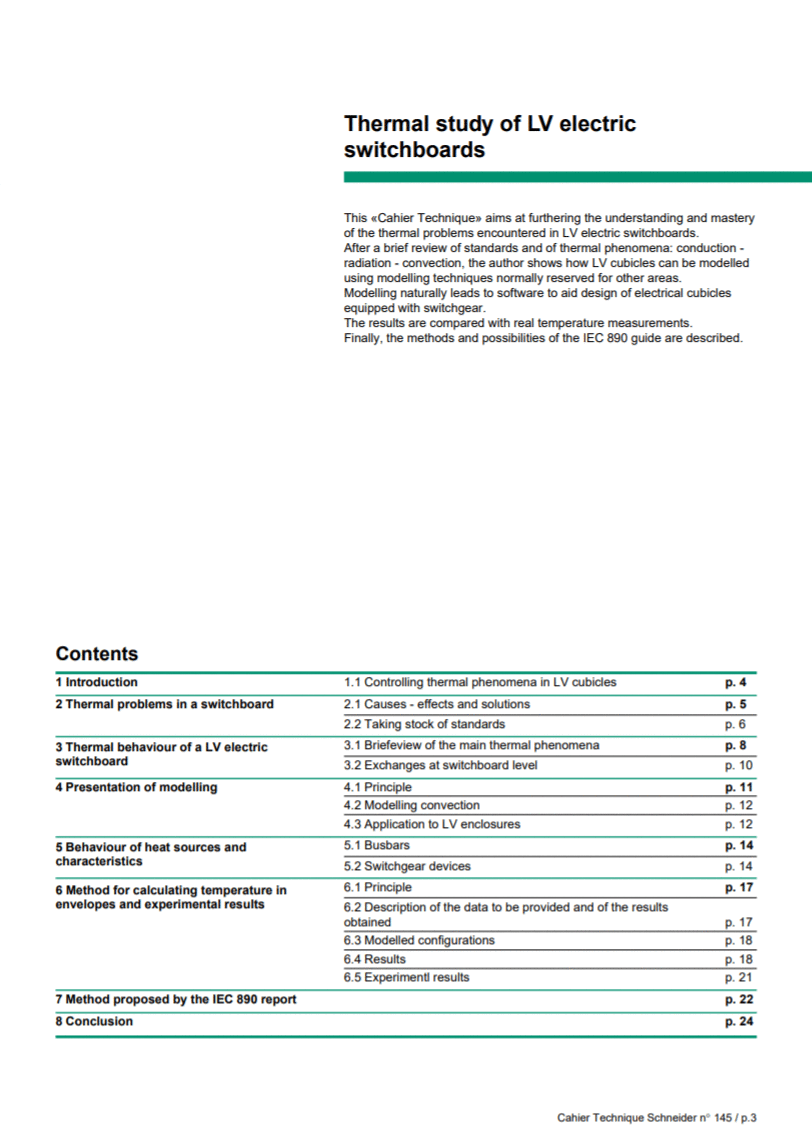Conduction – radiation – convection
This «Cahier Technique» aims at furthering the understanding and mastery of the thermal problems encountered in LV electric switchboards. After a brief review of standards and of thermal phenomena: conduction – radiation – convection, the author shows how LV cubicles can be modelled using modelling techniques normally reserved for other areas.

Modelling naturally leads to software to aid design of electrical cubicles equipped with switchgear. The results are compared with real temperature measurements. Finally, the methods and possibilities of the IEC 890 guide are described.
Controlling thermal phenomena in LV cubicles
The new manufacturing methods developed in industry in recent years (just in time…) have brought a new notion to light: industrial dependability. This concept which covers two different aspects, safety of persons and equipment, and availability of electrical power, shows when it is applied to complex processes, the critical points whose operation must be thoroughly mastered.
Mastery of its operation requires knowledge and control not only of the functioning of its components but also of the external influences to which they are subjected. An electric switchboard is the combination of 4 basic elements:
- the envelope,
- the switchgear,
- the connections,
- the functions performing indication, control and processing of information.
Electric switchboards are increasingly technical and require a certain number of basic studies in order to master, in the design stage, the operating conditions of its components in a specific environment. One area covered by such studies is the thermal aspects which form the subject matter of this «Cahier Technique».
AUTHOR: Schneider Electric expert | C. KILINDJIAN
| Title: | Thermal study of LV electric switchboards |
| Format: | |
| Size: | 0.3MB |
| Pages: | 28 |
| Download: | Right here | Video Courses | Membership | Download Updates |


